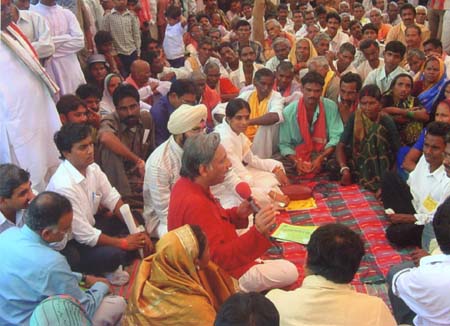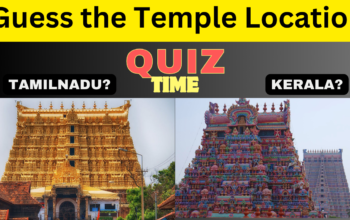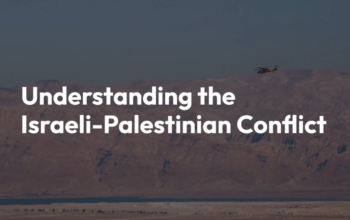For the last few days, I am putting up this question to whomever I talk to: ” Whether the Panchayati Raj and other third tier institutions provide the best setup for development”.
Almost all of us would come up with an answer that, Yes it is the best setup as long as the implementation is good. Well, my ideas are not far from such hopes. But I witnessed almost an inability of the grassroots democratic institutions to deliver on the development parameters.
Every Gram Panchayat, GPs, (set of five-seven villages) is supposed to organise palle sabhas twice in a year, the essential representative institutions at the lowest possible level. All the developmental decisions like selecting projects, roads, selection of poor people from their villages for various govt. schemes are taken in these sabhas. The govt. agencies cannot take up any project without the approval of these sabhas.

So far so good. It gives full power to these sabhas. But I found in my block, two GPs didn’t had palle sabha convened in the last three years! And don’t say this is an implementation issue. Soon after the elections, the sarpanchas and other GP level representatives are supposed to convene these sabhas. They didn’t. And when the Tahsildar intervened to convene the sabha, the people clashed within themselves for want of domination so bad that the sabha could not take place. So no decisions are taken on any works. All other GPs have some work or the other happening through my office as there are selected projects, except for these two GPs. Who is at loss?
In another village, the Palle sabha had decided to construct a road to a nearby temple, while there is a full lane of SC/STs without a road. With even funds at the disposal of the implementing agency, nothing could be done to divert this project as such. Many such projects are ill-selected, and the selection is valid for five years, till the next local elections. Similar stuff happens for listing of housing scheme beneficiaries, where the palle sabha essentially selects well-off people when there are hundreds of others in need. The inability of the downtrodden to raise their voice against the dominant is still unresolved. The PRIs are not giving the capacity or voice to those who didn’t have it. It just passes the buck from the salaried employees of the govt. to the five year termed local body representatives.
In this same time, I was trying to think of some IT solutions (habits never die so easily) to enable better grievance tracking at the block level(and I would be happy if anyone reading this is able to give a good practical solution). But, the problem is that, these blocks which are all now broadband enabled, hardly have any power supply. My block has a power cut of around six hours daily, and guess the timings of this cut, 10 AM to 4 PM. How on earth would any IT solution work if there is no power supply? God Knows. We can rely on power backups but we can’t work on them everyday. Solar energy is a good choice, but it is still a backup option and costly to invest with (no block offices have any solar setup, though). Since there is no power, forget about any video conferencing and all, the BDO has to run to the district headquarters almost every alternate day for some meeting or the other. We adopt IT and we keep it idle.
Even when the constitution made the PRI setup, some work is still left to be done, there is no clarity on the kind of work and separation of responsibilities between the Sarpanch and the Samiti members (both political). Most of the times, the Samiti members end up doing nothing except to bark and stall the meetings whenever they are convened. There is no need to mention about these block level meetings, these local representatives feel as if its a loksabha and they start doing exactly the same things their seniors do in the parliament. This meeting where all the palle sabha approved projects are sanctioned and processed do not take place and it ends up being a complaint and petty fighting forum.
I have to still agree that the PRI is the best setup probably for lack of any other alternative. Finally it all boils down to, now and always, having good (or probably strong) people. Everywhere and all the times.
Related Posts
Hi there! I’m Sethu, your go-to guy for all things tech, travel, internet, movies, and business tips. I love sharing insights and stories that make life more interesting. Let’s explore the world together, one article at a time!












Enabled IT solutions will work but that will definitely takes more time. Since the awareness of the Internet haven’t quiet totally reached the village levels . There should be a more pragmatic approach for this solution. Getting engaged with NGO will be one of the step where we can bring some awareness about the importance of the PRI. Setting frequent meetings with the sarpanchs and the local people about the development activities which will lead to the fruitful results. People in the villages needs more interaction with the officers so that we can enlighten their minds easily. I can take a clear example in my village where girl students are not allowed to study after 10th (Not in the case of boys). The only thing we done on that day is we requested one of the new trainee officer to have a visit to our village and explained him about the situation. With in one month of time he almost visited 10 times to my village and had a thorough sessions with the villagers about the education and development with respect to it. The people now started changing slowly and sending their children to colleges(Not 100%). A perfect interaction with people can enlighten their minds…. It’s not just about technology…It’s just about interaction……
Yes . Capacity building is happening, albeit slowly. In fact, that’s a positive sign, at least in my area, the training and other programs are very effective and received well.
but if one feels that conflict groups can cooperate, even slowly, that’s asking for the greatest Indian wish.
for the last point. there is no strict action. if there is no gram sabha, there is no work. where does the payment question comes from?
answer of this basic need is more political than administrative..
BUT still u can do more in capacity building….involving some local NGO…, take some respected people from these village to near by more developed village….
Starting with those scheme in which both conflicting group have same interest ..same aspiration……slowly they will develop cooperation ….
even if GRAM SABHA did not take place……..take strict action ..stop payment of NREGA n other scheme…until gram sabha operate…….
Good points made dude. I agree that we might have to rethink on the 5-year term. They do spend a good amount of money. And they really collect them all back through touts from pensions, payments and anything they could get hands on.
Interesting to know little dissatisfaction there in US as well. Yes, a phone based customer service is possible (it works for 108) , it should probably be more localised.
we need swaraj, but how it should be is what i am trying to impress upon.
I know this needs a constitution amendment but at such a lower level what is needed is to re-elect members every 2 years not five (of course pending a survey how often the same guy is getting re-elected).
Pros of this approach is if at all candidates would stop spending money on election ( as this affair would be expensive ). There would be less incentive to be corrupt and more to improve something as the iron is still hot.
Con would be some guys would be just latent as they might think of not having enough time to implement anything.
Coming to the part to leverage technology for grievance system. This isn’t effective even in USA. As it’s available at the finger tips people complain more and most of it gets discarded.
That’s why we NEED SWARAZ…………